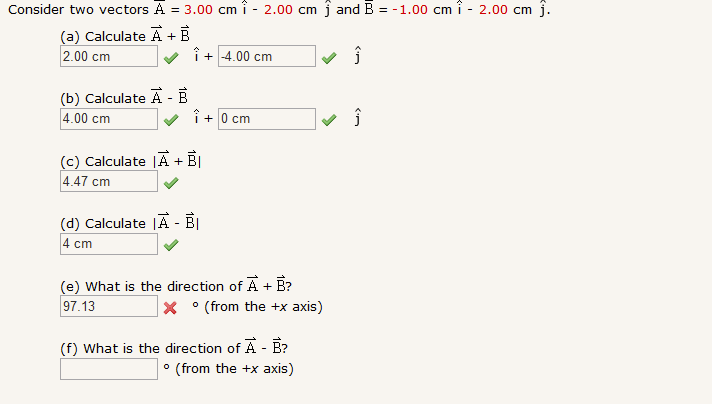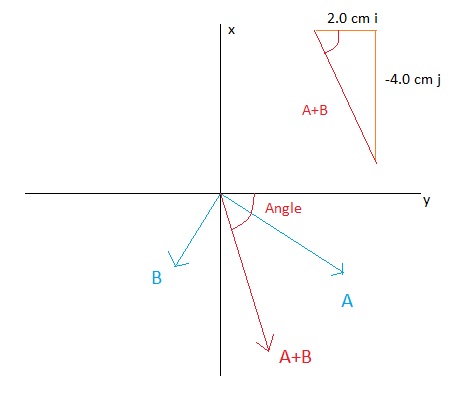Vectors Please Help ( What is the direction of vector A + vector B?)
What is the direction of vector A + vector B?
What is the direction of vector A + vector B?
2 Answers
Explanation:

Not drawn to scale
Sorry for the crudely drawn diagram but I hope it helps us see the situation better.
As you have worked out earlier in the question the vector:
in centimeters. To get the direction from the x-axis we need the angle. If we draw the vector and split it up into its components, i.e.
In our case the side opposite the angle is
Obviously this is anti-clockwise so we must put a minus in front of the angle
If the question is asking for the positive angle going clockwise around the diagram then simple subtract this from
e.
f.
Explanation:
It looks like your answer for e is wrong and perhaps you have not found an answer for f. So I will help with both.
Note: I am using the angle measuring method in which you start at the +x axis and circulate counterclockwise to the vector. So the +y axis is at
http://chortle.ccsu.edu/VectorLessons/vch05/vch05_3.html
e. From your work,
Let's calculate the angle
The -y axis is already
f. From your work,
I hope this helps,
Steve


